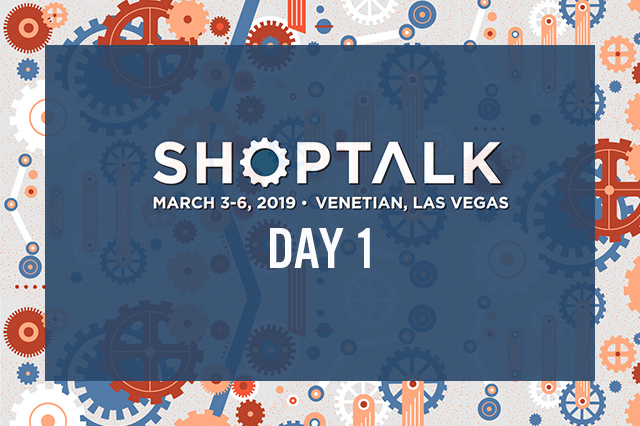
albert Chan
Coresight Research is in Las Vegas this week, attending and participating in the Shoptalk 2019 conference. We share our key insights from the first day of the conference.
It’s an amazing and challenging time for retail, as consumer expectations shift rapidly, the lines between online and offline blur and startup companies deliver technology that hastens the pace of disruption. As Shoptalk’s Founder, Anil Aggarwal said in his opening remarks, “We believe that everyone will look back in ten years and ask the question, ‘Did shopping really look like that in 2019?’” Retail needs extensive and meaningful collaboration as it creates its future. Now is a time of great opportunity – but also serious challenges.
These are three trends we saw on day 1 of Shoptalk:
The consumer experience is the North Star for retailers and brands in today’s digital transformation. At Hershey, Doug Straton, Chief Digital Commerce Officer, uses the Five C’s to focus the digital strategy: Consumer at the center, and understanding the shopping journey via Connection, Content, Conversion and Community. Hershey has been part of the US culture for 125 years, with great consumer awareness that spans confections, a theme park, hotel and retail. But like established brands, the internal digital transformation at Hershey lags the consumer facing transformation and requires a new corporate culture. Straton said he spends about 50% of his time evangelizing the benefits of a customer-centric digital transformation, using a common language across varied functions.
The proliferation of data requires a criteria matrix to parse out what data is meaningful strategically for a retailer. Data analysis must support strategy and support improved agility. A single view of the customer is necessary to integrate the disparate data flows. At John Hardy, customer acquisition is the priority for IT, according to Suzanne Hader, the brand’s Chief Marketing Officer. Founded in 1975, John Hardy was wholesale until five years ago. Today, direct to consumer represents 40% of brand revenues. Intentionality around data usage can reduce the complexity of the overwhelming amount of created daily.
Retailers are actively rethinking their store fleets for omnichannel strategies, for consumer engagement and brand building. A localized approach may be more complex, but may yield better ROI and profitability as it delivers a better consumer experience. We heard Macy’s CFO, Paula Price, and Build-A-Bear’s President and CEO, Sharon Price John, discuss how the companies are navigating the rapid changes of retailing today. From vendor direct to give an online shopper endless aisles, to pop-ups and modular store fixtures, they are willing to disrupt themselves to meet consumers where they are. Segmenting stores as destinations and entertainment locations for fulfillment and service will allow Macy’s to invest appropriately in its 640 stores. The economic model is changing as licensing and off-price become larger parts of Macy’s business. Build-A-Bear refreshed the brand and is exploring new points of distribution, including a six-store test with Walmart, “Condo Cubs” with an opening price point of $10. Using modular store fixtures, the brand is able to open in A and B+ malls – where they normally couldn’t afford the lease expense.
There is no single formula for retail success, no single format. Today there are many different formats and they will continue evolving to meet the changing consumer needs and expectations.
Retail isn’t dead, malls aren’t dead, but sometimes it takes the possibility of imminent failure to drive change – as it did at Build-A-Bear. Consumer centricity and creating retail theater at the lease line have re-invigorated the brand. With strong emotional connections created at retail, Build-A-Bear is looking at international expansion and other categories.